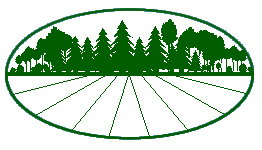Woodlot Association of Alberta
c/o Olson Office Management
P.O. Box 303
Beaverlodge, AB
T0H 0C0

Woodlot Association of Alberta
c/o Olson Office Management
P.O. Box 303
Beaverlodge, AB
T0H 0C0
Roads and trails on your woodland are used for many purposes, from working in the woodlot to various recreational activities.
Chances are your woodlot already had a road or trails when you acquired it. You may want to upgrade these or build new ones, depending on your management goals.
Planning
Planning is a critical step when building roads and trails. Factors to be considered include:
The best time to build a road is usually from mid-summer to mid-fall when the ground is firmer and drier. Contact the NS Department of Environment for approval of any alteration to a watercourse or wetland.
Roads
The NS Department of Natural Resources class system rates forest access roads from a high-quality, two-lane 'A' class road to 'D' class, a single lane road designed to carry a loaded tractor trailer at low speeds up to five times a day in dry conditions or when frozen.
Help with planning and laying out your road may be obtained from Forestry Consultants, Contractors, Woodland Owner Organizations and Industry Groups located throughout the province.
Find a road building contractor with a good reputation and ensure a contract includes:
Trails
Trails may be designed specifically for harvesting, recreation or access.
Harvest trails are designed to feed directly onto roads. Factors that should be taken into consideration include:
Recreational trails may also be used as harvest trails and vice versa. Planning for recreational trails should include:
Features such as trail height, width and surface will depend on the requirements of the recreational activities.
If bridges are required, placement and design will depend on each individual situation. Detailed information may be found in Woodlot Roads Stream Crossings available from the NSDNR Library (see below).
Resources
Developing Trails in Nova Scotia
Nova Scotia Trails Federation
902-425-5450
Contractors & Operators
Best Management Practices Manual
Nova Forest Alliance
902-639-2921
Natural Resources Education Centre
Information or advice on developing interpretive trails
902-384-3420
A Forest Landowner's Guide to Building Forest Access Roads
- Online
US Forestry Service